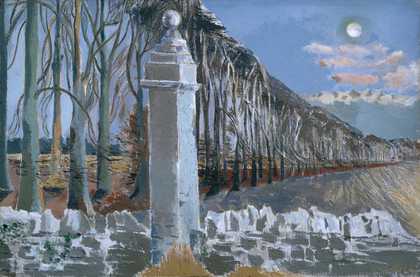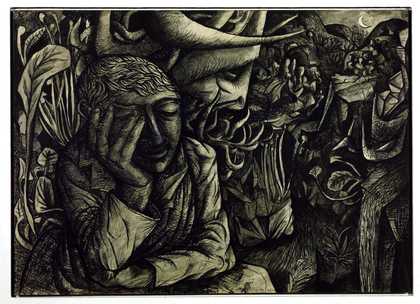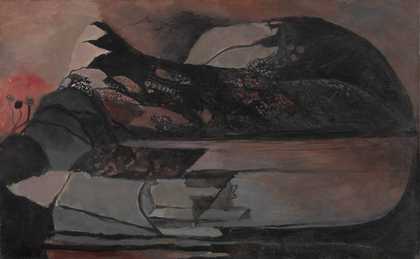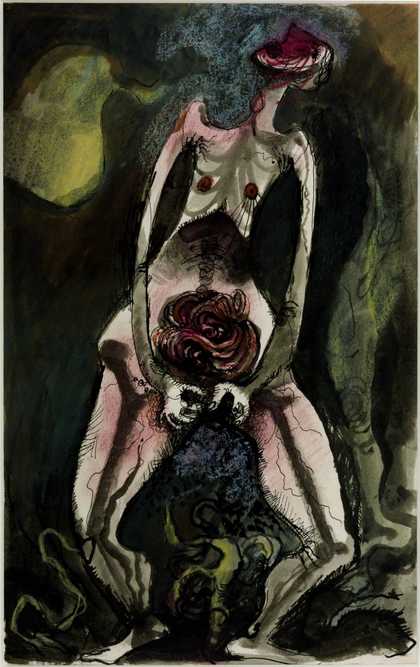
Paul Nash
Pillar and Moon (1932–42)
Tate

John Craxton
Dreamer in Landscape (1942)
Tate

Graham Sutherland OM
Black Landscape (1939–40)
Tate

Keith Vaughan
Communication of Hate (c.1943)
Tate
The work of these artists often included figures, was generally sombre, reflecting the Second World War and its approach and aftermath, but rich, poetic and capable of a visionary intensity. It was partly inspired by the visionary landscapes of Samuel Palmer and The Ancients, partly by a more general emotional response to the British landscape and its history.
As well as Paul Nash and Graham Sutherland, other major neo-romantics were Michael Ayrton, John Craxton, Ivon Hitchens, John Minton, John Piper, Keith Vaughan. The term sometimes embraces Robert Colquhoun and Robert MacBryde, and the early work of Lucian Freud. Also the graphic work of Henry Moore of the period, especially his drawings of war-time air-raid shelters.
The term is also applied to a group of figurative painters working in Paris in the early 1920s. Their brooding often nostalgic work quickly became labelled neo-romantic. Chief among them were the Russian-born trio of Eugène Berman and his brother Leonid, and Pavel Tchelitchew.
